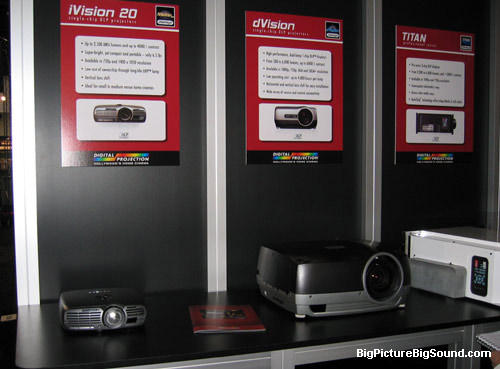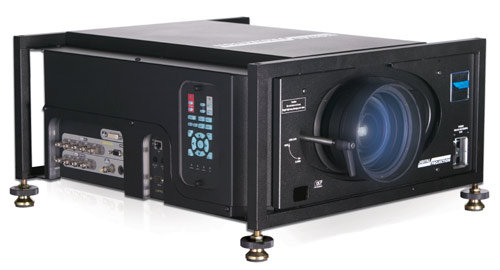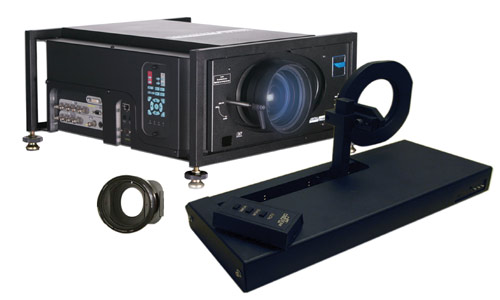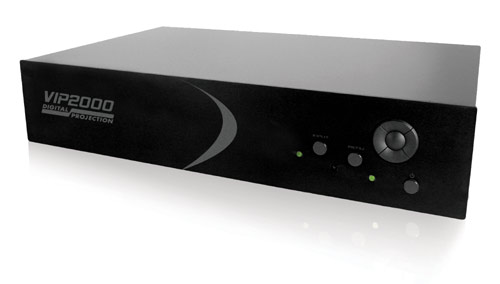Digital Projection Inc. (DPI) Showcases New 1080p DLP Projectors and Processor
By Chris Boylan
The biggest projector company you've probably never heard of,
Digital Projection Inc. (DPI) provides home theater systems "to the stars." Seriously, in addition to providing projection systems for such productions as The Academy Awards, the Sundance Film Festival and The Emmy Awards, DPI does a lucrative business among the Hollywood "A list." DPI's projectors are installed in the homes of actors, entertainers, attorneys and executives throughout LA-LA-land.
DPI also builds digital projection systems for hundreds of "large venue" commercial cinemas around the world, with a focus on the Indian and European markets. These cinemas are smaller than your average U.S. cineplex but larger than your typical home theater, so they demand high brightness and high resolution so they can successfully project an image on larger screens than you typically find even in the most palatial home.

DPI demonstrated DLP projectors across their entire model line, from the diminutive iVision, to the more robust dVision, and up to the massive Titan.
At CEDIA Expo, DPI was on-hand demonstrating a room full of their DLP projectors on five separate screens, from affordable single-chip 720p models in their iVision series, to their latest 1080p 3-chip projector, the TITAN 1080p-250 which produces a blinding 5,000 to 14,000 Lumens of light output, depending on how it's configured.

DPI's Titan 1080p-250 is a veritable light cannon with up to 14,000 Lumens of brightness.
And for those who think the 16:9 aspect ratio just isn't wide enough, DPI offers the TheaterScope: an anamorphic lens option (with motorized sled) for projectors in their dVision, Mercury and Titan lines. The TheaterScope system electronically squeezes, then optically restores a 16:9 image into a 2.35:1 widescreen image using the full height of your projection screen. Don't worry, the squeezing and stretching doesn't have a detrimental effect on the image - proper screen geometry is maintained at all times. If you haven't painted your entire wall with
ScreenGoo, then you'll want to make sure you have a screen that supports a 2.35:1 ratio.

DPI's TheaterScope system features an ISCO anamorphic lens that expands 2.35:1 material out to its proper width without black letterbox bars.
The demonstration of five concurrent projectors running the same material was fairly effective at showing the benefits of 1080p resolution, though the 720p projectors were all well above the heads of the viewers so it was a bit difficult to make a direct apples-to-apples comparison. Even the 720p projectors did a nice job representing SD and HD content, with excellent detail and vibrant colors, probably due to the scaling/processing prowess of DPI's own VIP-2000 video processor, which features Silicon Optix Realta HQV™ (Hollywood Quality Video) processing.

DPI's VIP-2000 processor features Silicon Optix Realta HQV processing. In its standard configuration it offers 2 HDMI, 2 component, 2 composite and 2 S-video inputs.
Pricing of the DPI consumer projectors can be determined by calling or visiting a DPI dealer. The top-of-the-line HIGHLite Reference 3-chip 1080p model lists for $105,995, but most of their projectors are available for appreciably less.



